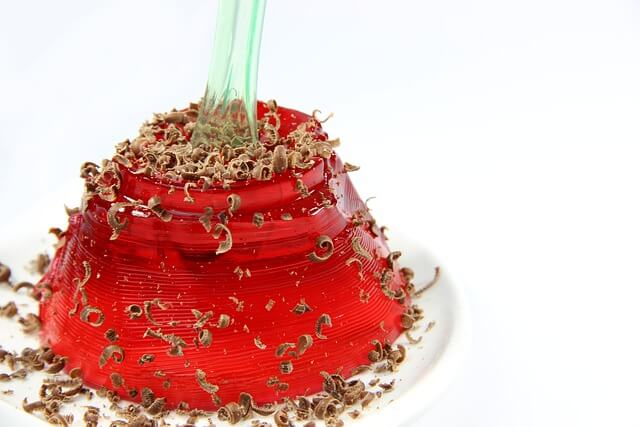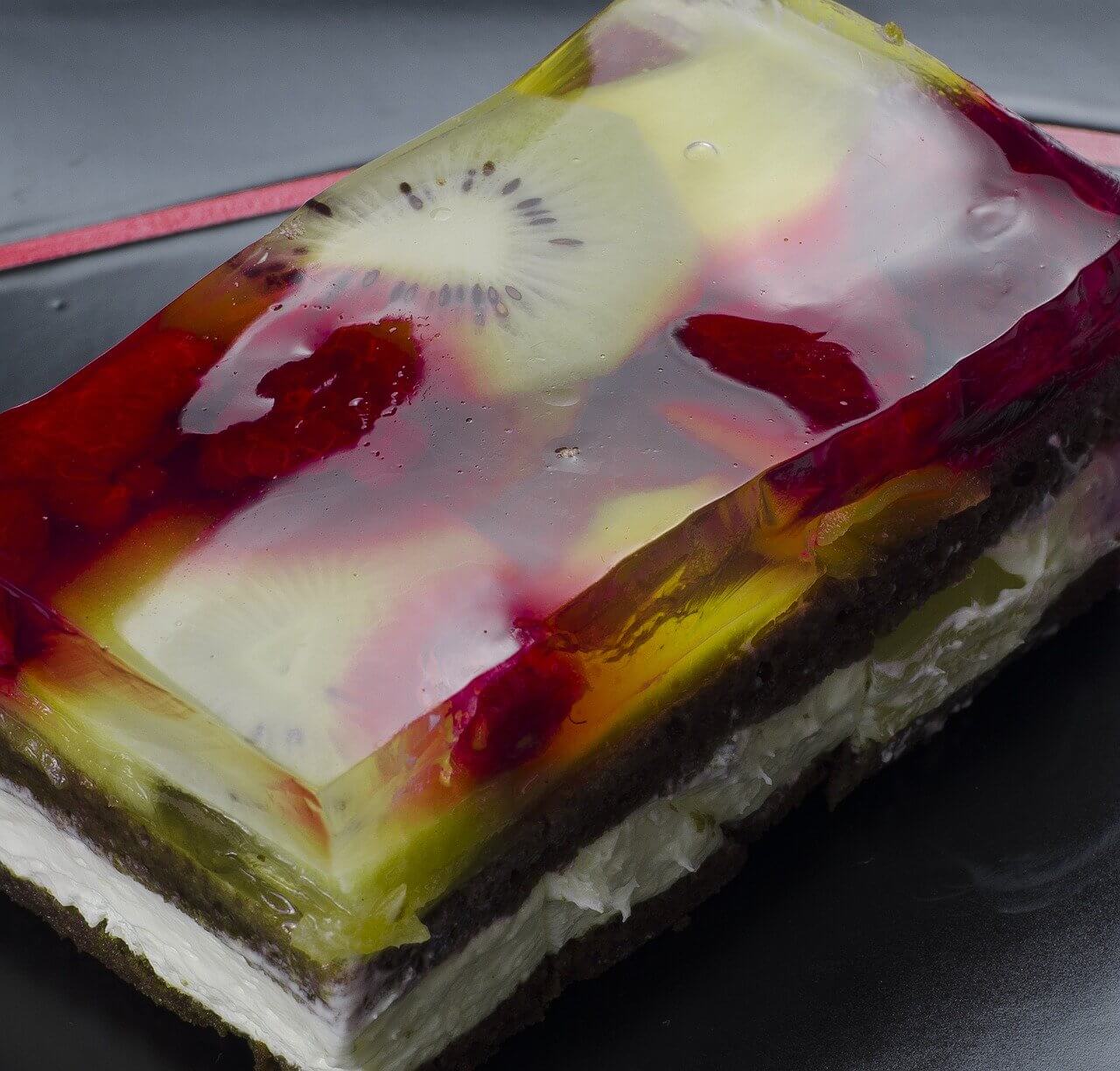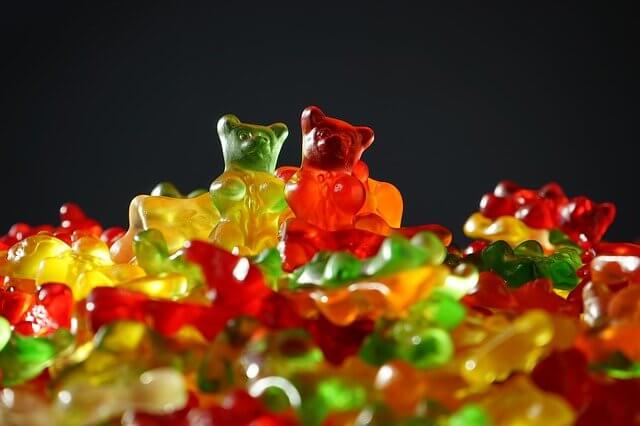What is gelatin? What is it made of? Uses of gelatin in food industry, info and facts.
Gelatin; A pudding made from the hoofs, bones and horns of animals does not sound very tempting, but when it appears on the table in the form of a jelly you probably enjoy eating it very much.

The gelatine from which such a jelly is made is obtained by first dissolving from the hoofs, bones and horns everything but the sticky substance called cartilage. The cartilage is then boiled until it dissolves, becoming a crude, or rough, form of gelatine. Further refining and filtering in alcohol supplies the purer gelatine. This solidifies when cool and can be made into the powder or sheets sold as gelatine. When this is coloured and flavoured with fruit juices and then dissolved in warm water, it sets to a clear sparkling jelly on cooling.
As gelatine belongs to the protein class of foods, it is easily digested. It is therefore good for invalids. It is used chiefly in jellies and in soups, ice cream, chocolate fillings and preserved meats. It is also used as a coating for pills, and in cough sweets and throat medicines, and for making glue.
A very pure form of gelatine is made from the air bladder of sturgeon or other fish. This is usually known as isinglass. It is not to be mistaken for the mineral isinglass, which is often called mica.

Obtaining
Gelatin is a mixture of peptides and proteins produced by partial hydrolysis of collagen extracted from the skin, boiled and ground bone, hooves, tendons, organs and viscera of cattle, pigs, horses and poultry.
The transition from insoluble collagen to soluble gelatin constitutes the essential transformation of its industrial production. The process can give different gelatins depending on the breaks in the intramolecular bonds.
- The raw material is obtained from tanneries and slaughterhouses, and different pretreatments are carried out:
- The leathers are treated with salts to preserve them.
- The skins are frozen for storage and transport.
- Beef bones are defatted and ground prior to transportation and processing.
- Fresh bones are collected daily and must be processed within 24 hours of slaughter.
- The bones are treated in an acid solution to extract the minerals (calcium phosphate) without affecting the organic contents.
- After washing, the resulting product called ossein becomes flexible. The phosphates are separated by precipitation with lime, obtaining as a secondary product calcium phosphate.
- Ossein and skins are acid-processed for hydrolysis at room temperature for a relatively short time; they are put in contact with a lime solution for 5 to 10 weeks at room temperature; and then the pH required for the gelatin extraction itself is adjusted.
- The extraction is a discontinuous, batch process that produces a liquor of 6% to 10% gelatin. It is then filtered and continuously concentrated in a vacuum evaporator. The solution is sterilized at 145 ° C (293 ° F) and rapidly cooled to gel the solution. This gel is extruded in the form of grains and dried with filtered and aseptic air.
 Finally the grains are ground until the required particle size is obtained. They must be stored in suitable conditions, since they are easily altered in solution or humidity. They can also be purchased in the form of sheets or sheets that are usually rectangular, amorphous, thin, flexible, with a net fracture, transparent or slightly yellowish, odorless and with a very faint special flavor. This last form is hardly commercialized since the granulated presentation is easier to dissolve (although it is still used in some parts of Europe and South America).
Finally the grains are ground until the required particle size is obtained. They must be stored in suitable conditions, since they are easily altered in solution or humidity. They can also be purchased in the form of sheets or sheets that are usually rectangular, amorphous, thin, flexible, with a net fracture, transparent or slightly yellowish, odorless and with a very faint special flavor. This last form is hardly commercialized since the granulated presentation is easier to dissolve (although it is still used in some parts of Europe and South America).